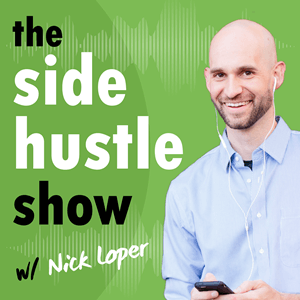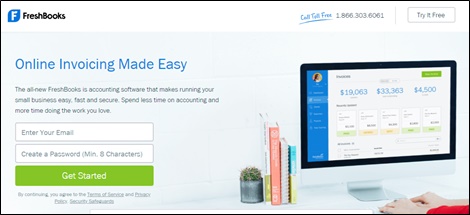$900k from Someone Else’s Product: Top Affiliate Marketing Strategies

Table of Contents

Affiliate marketing is a great business. You:
- help people make decisions
- point them to the products that will help them
- earn a commission on those referrals
But most affiliate marketers — myself included in a lot of cases — don’t put as much effort as they could into their campaigns. And as a result, we cut ourselves short of the results we could have seen if they just went a little deeper.
Today’s guest is Matt Wolfe from FutureTools.io, and he’s going to break down what that looks like in practice and the specific tactics you can use to earn more commissions and better serve your audience.
Because the difference isn’t a 15% incremental improvement — it may be a 10x gain or more!
Tune in to the Side Hustle Show interview to hear how Matt:
- made almost $1 million dollars from one affiliate product
- promoted his affiliate link
- drives traffic today
Getting Into ThriveCart
Matt jumped into the online shopping cart platform ThriveCart shortly after its creator, Josh Bartlett, launched it.
He was already friends with Josh prior to the launch and would often hop on Skype calls with him to bounce ideas off each other.
Josh approached Matt to see if he’d be interested to share the platform with his email list. He did, and it was an instant hit.
What Makes ThriveCart Unique?
ThriveCart stands out from other SaaS companies because it’s sold as a one-off purchase. Matt says that’s one of the platform’s biggest selling points.
“Everybody else that was doing something similar was trying to do that monthly fee.” Matt was able to jump in and offer a better alternative: a one-off 50% commission payment.
With many recurring affiliate programs, memberships have only a two- to three-month retention.
So, say you were on a $99/month program and somebody only stuck around with your product for three months. You then make $50 over three months for a total of $150.
Now, ThriveCart was a $600 product, and Matt made 50% upfront. That’s twice as much as you would have made with your product if somebody stuck around with it for six months.
“If you kind of work the math a little bit, it starts to make a little more sense.”
Choosing Affiliate Products to Sell
Matt’s affiliate marketing strategy worked so well for him largely because he chose a product that he loved and wanted to use for himself.
You’ve got to want to talk about the product!
Matt says you also want to make the commissions make sense. For instance, it won’t make sense to go out and build a dedicated website for a measly 4% Amazon commission.
You want to reserve efforts like that for products like software tools, which will typically pay you anywhere from 30-50% recurring commissions on each successful referral. On that note, Matt says he likes to go for high-ticket products as well because the more the product costs, the more the commission is.
Relationships also figure into Matt’s product selection process. “I want to get to know the person behind the product. I want to be able to jump on a call with them and talk to them.”
With ThriveCart, for instance, his being able to talk with Josh allowed him in turn to provide his blog and YouTube channel subscribers with valuable content about the platform.
How to Make Your Affiliate Link Stand Out
Even though ThriveCart was an instant hit with Matt’s email list, he needed to step his promotion efforts up a notch as more affiliates discovered the product and started to promote it.
His solution? Offer bonuses.
The “Suring Up” Bonus
To create this bonus, Matt starts by assessing his product and thinking of a possible hole or gap that it has. He then tries to fill that gap.
With ThriveCart, for example, users choose from customizable templates to set up their checkout page. Matt made that process so much easier by offering done-for-you templates and checkout pages that worked best for him.
The Personal Touch Bonus
The purpose of this bonus is to show off Matt’s relationship with his affiliate product’s creator and in turn, lend his link credibility.
Typically, he would do an interview with the product’s creator — talking with them about any new features, what they’re excited about, and other similar topics — and get the interview out.
Matt has already done four interviews with Josh over the years.
The Case Study Bonus
Matt also likes to do a case study to show people that he uses his product himself, how he uses it, and the results he’s achieved with it.
In his case study for ThriveCart, he included things like how he launched his own product with it, the results he got from his product, and the landing pages, copies, and pricing he used.
“I just break down a case study of my own promotion.”
Matt says he has tried to replicate this three-bonus model for pretty much every affiliate product he’s gone deep on since ThriveCart.
Another bonus that Matt came up with a little while later is a course called “Rapid ROI Tactics.” It taught people how to make their entire investment back on the purchase of ThriveCart.
ThriveCart cost $600, and Matt saw the course as a way to ease the pain of the purchase.
Delivering Bonuses
Initially, Matt delivered his bonuses to customers manually.
He tried to streamline the process using Teachable, an all-in-one platform that helps you create and sell courses online. It handles everything from web hosting to payment processing.
Eventually, Josh added a feature to ThriveCart to automatically deliver bonuses.
Other Marketing Strategies to Increase Affiliate Sales
ThriveCart quickly became Matt’s biggest income stream, so he tried several different strategies to promote his affiliate link and increase sales.
“I kind of had this thought process of ‘If this was my product and I was the one who was selling it, what would I do? What marketing strategies would I go for?’” he said.
Create a Facebook Group

Matt set up a Facebook group called “ThriveCart Power Users.”
The idea was to create a community of people who were already using ThriveCart and promote the group to those who were only exploring it.
“I wanted to give access to people that were still in that pre-purchase mode,” Matt said.
He then uploaded a group cover featuring the call to action “Learn More At: GetThriveCart.com/Power.”
Matt credits Jason Henderson, who did the same strategy using ActiveCampaign, for this idea.
Follow Up With New Members
During the early days of his Facebook group, Matt followed up with people as he saw them join the group.
He asked people who requested to join the group to answer the membership question “Do you already own ThriveCart?”
If the person said “no,” Matt would send them a message on Facebook and try to find out why they haven’t purchased it yet. “If I can help them make the decision, then I would.”
He added that he was transparent about his intentions and that people who ended up joining the group were often happy to use his affiliate link.
Make a Website

Matt also made a website dedicated to his product: GetThriveCart.com.
The website, which served as another entry point into his sales funnel, actually started out as a landing page to show off his bonuses.
Matt began to notice that it was ranking on Google. Coincidentally, he wanted to rank for more ThriveCart-related keywords. So, he decided to turn the landing page into a WordPress blog.
Whenever a new ThriveCart feature would come out, Matt would write a quick blog post about it.
“I almost became ThriveCart’s content marketing strategy,” Matt said, adding that ThriveCart at the time didn’t have a blog of their own.
Of his fantastic domain name, Matt said his relationship with Josh was beneficial in that he was able to get Josh’s permission to use “ThriveCart” and not run into trademark issues.
Run Ads
Once he was regularly cranking out content on his blog, Matt started running advertising to it using Google Ads.
He targeted the keyword “ThriveCart,” so anytime somebody searched “ThriveCart,” his ad would show up.
Through Google Ads, he was able to see exactly what people were searching for around the “ThriveCart” keyword. He then used that data to write more SEO-driven blog posts.
Matt said they weren’t targeting a specific figure in terms of ad spend ROI. They were getting a 6x return, however, meaning they got about $6 out for every dollar they put in.
Eventually, they reached a point where their SEO was driving more sales than their ads. “The SEO kind of tipped the scale, and now, I don’t even run Google Ads to [the website] anymore.”
What Does Your Lead Magnet Look Like?
For several years, Matt’s lead magnet was a PDF of a screenshot of a landing page that was converting well for him.
It was only recently that he changed his lead magnet to a course called Online Business In-A-Day, which walks you through how to build, host, and sell a course through ThriveCart.
He created that bonus after Josh added a feature to ThriveCart that allowed you to build your entire membership site inside the platform.
Matt used ActiveCampaign to follow up with people who downloaded the bonus. But rather than send them his affiliate link, he linked them to his blog posts, all of which included the link.
He would send new sign-ups a different blog post link every day for 10 days as part of his email sequence. “I was trying to become a valuable resource to them around ThriveCart.”
Promoting on YouTube
Matt also promoted his affiliate link through his YouTube channel Thrivecart Power Users.
Whenever a new ThriveCart feature would come out, he would make a new YouTube video talking about the feature.
When the videos come out, he would embed them on the blog and even send them to his email list.
“We just wanted to be everywhere. If somebody was on YouTube and they searched ‘Thrivecart,’ we wanted to be there,” Matt said.
What Would You Do Differently if You Had to Start Over?
If Matt had to start over today, he says he would probably build a Discord community and drive people there.
“A lot of where I’ve been spending more time lately has been Discord.”
He’s not so sure about creating a Facebook group again, though. “It was just not scalable.”
Matt said they had to eventually hire someone to keep an eye on the group and respond to members, but that person wasn’t as motivated as they were to sell ThriveCart.
Any Surprises?
“I think what surprised me the most is that [this promotion] is still running seven years later.”
On a more serious note, Matt confessed that Google Ads was something he was always scared to play around with.
It wasn’t until he rented a friend’s office space that he decided to give it a go as his friend happened to be a Google Ads expert.
To Matt’s surprise, he saw results almost as soon as he started to run ads to his website.
What’s Next for You?
“My two loves right now are AI and making cool videos,” Matt said. “That’s pretty much where my head is at these days.”
He’s also excited to make more videos on his YouTube channel, having worked with a guy who did live TV production for ESPN, Microsoft, and sports games last year.
Matt’s #1 Tip for Side Hustle Nation
“Build something you wish you had yourself.”
Links and Resources
Looking for More Side Hustle Help?










